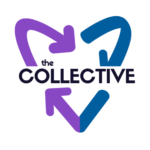Workplace Wellness Hour (March Recap)
This March, the Workplace Wellness Hour Series, hosted by Sumana Jeddy, Felipe Cofiño and Ashley Fluellen, explored The Future of Work through three timely themes: DEI, return-to-office mandates, and the role of AI. In this blog, we will recap key insights from March’s Workplace Wellness Hour (live on LinkedIn every other Monday night).
What’s Next for DEI in the Workplace? (live on 03.03.2025)
A Conversation on Relevance, Reframing, and Real Impact
The first session opened with a vital conversation around how we approach Diversity, Equity, and Inclusion (DEI) in today’s evolving workplace. As industries undergo massive shifts, it’s clear that DEI is also at an inflection point.
Sumana and Felipe led this dialogue, diving into how DEI, beyond just a buzzword, can remain relevant, meaningful, and effective in building inclusive, people-first workplaces.
Reassessing the Value of DEI
Felipe Cofino, drawing from his HR leadership experience, asked five provocative questions to kick off the conversation:
- How much value does DEI actually bring to the workplace?
- Has DEI developed a negative association because some organizations treated it as a compliance task?
- Should DEI be reframed or rebranded to remain impactful?
These questions reflected a growing concern: while DEI initiatives have undoubtedly opened doors and created space for more inclusive thinking, the term itself has become muddied, especially when it’s reduced to box-checking rather than embedded into culture.
Felipe emphasized that diversity of thought, experience, and perspective remains critical, even if the language around it shifts. “We can change the words, but the meaning and the impact needs to stay,” he noted.
The real question: Are we actually doing the work? Are we making change happen?
Read the remainder of #FelipesFives here.
Rebranding, Restructuring, and Measuring DEI
Sumana Jeddy brought a strategic lens to the discussion, drawing on her experience of merging two companies and reframing how DEI is integrated into business operations. Her perspective centered around repositioning:
- How can DEI be rebranded to reflect what it truly stands for today?
- What tools can we use to measure success beyond surface-level metrics?
Sumana suggested practical ways to track progress through data-driven dashboards, metrics like pay equity, promotion rates, psychological safety scores, and belonging survey results. These, she argued, provide a more nuanced and accurate view of how inclusive a workplace really is.
But data is only part of the equation. “DEI must be seen as part of the business fabric,” she said. “It’s not about hitting numbers, it’s about building a culture.”
One powerful way to do this? Hold leaders accountable through structured mentorship programs that drive equity in advancement and visibility.
DEI Resource: Inclusion Factor
Return to Office: Rebuilding Connections or Forced Compliance? (live on 03.17.2025)
The second session of the Workplace Wellness Hour explored the growing tension around Return to Office (RTO) mandates. Are they a necessary step toward rebuilding workplace culture—or are they counterproductive for businesses trying to stay competitive and agile?
Felipe Cofino kicked things off with a fresh #FelipesFive, this time centered around the impact of RTO decisions:
- How hybrid work fosters deep work and innovation.
- The challenge of re-engaging employees after years of remote and hybrid setups
- What employees really want from in-person work (spoiler: it’s not just meetings)
In-person work is beneficial for connection, collaboration, and creativity, even as remote flexibility remains a practical and often necessary part of the modern work experience.
Read the remainder of #FelipesFive here.
The Case for Hybrid: Flexibility with Purpose
Sumana Jeddy advocated for a balanced approach. “There’s a time and purpose for both,” she said, noting that home is often better for focus, while the office excels at facilitating collaboration. The real opportunity lies in identifying what tasks are best suited for each environment—and giving people the freedom to align their work accordingly.
Hybrid work also supports employees through life’s realities. Whether it’s caregiving, family needs, or simply different productivity rhythms, the flexibility of a hybrid setup allows people to show up as their best selves more consistently.
Ashley Fluellen also voted for hybrid and added a more imaginative take. As a creative professional, she reflected on the early promise of remote work: “I had more hope for what the future of work could look like,” she shared. “If you could imagine your ideal work environment, what would it be?” That question alone invites leaders to design with more humanity and curiosity.
Trust, Accountability, and Culture
Of course, hybrid isn’t a magic fix. It requires trust, structure, and accountability. Guest speaker John King reminded the group: “It takes a special trust and confidence to uphold the duties of a company from a remote or hybrid platform.”
To make it work, companies need:
- Clear productivity goals and expectations
- Strong onboarding and intentional goal-setting
- Systems for time management and performance feedback
- Regular in-person moments to recharge the culture and rebuild personal connections
The bottom line: RTO shouldn’t be about control. It should be about connection—and building a flexible structure that empowers employees to perform at their best.
AI and Peer Support: Balancing Innovation with Human Connection (live on 03.31.2025)
In the third session of the Workplace Wellness Hour series, the spotlight turned to Artificial Intelligence and how its growing presence in the workplace is shaping employee wellness, communication, and connection.
Felipe Cofiño framed the conversation with a balanced take in this week’s #FelipesFive, offering both the benefits and the concerns of AI in the modern workplace.
The Benefits:
- Train AI with ethical and inclusive data
- Prioritize transparency and privacy
- Empower leaders to use AI to support well-being
The Concerns:
- Bias and misinformation
- Privacy and trust issues
- Gaps in emotional intelligence
Read the remainder here.
AI and Isolation: Human Touch Still Matters
Sumana Jeddy emphasized the need for balance. While AI can be an efficient tool, it shouldn’t replace the social dynamics that make work meaningful. “When it comes to connection and peer support, a human touch is needed,” she shared. In today’s increasingly digital environment, maintaining a sense of community, especially in remote settings, is crucial for employee well-being and trust.
Sumana suggested that when used intentionally, AI can support well-being by offering quick access to resources and creating time for deeper work and conversations. But it must be guided by ethical standards and a commitment to preserving genuine connection.
Caution with a Creative Lens
Ashley Fluellen expressed a more critical view. “I’m not a fan of how AI is often used in daily life,” she admitted, especially when it comes to sensitive areas like mental health, therapy, or personal growth. Relying on AI for emotional support or advice, she warned, risks replacing expert guidance with quick, but unreliable fixes.
Ashley offered a memorable quote that captured her perspective:
“I want AI to do my laundry and dishes so I can do my art and writing, not for AI to do my art and writing so I can do my laundry and dishes.”
Her point? AI should enhance human creativity and well-being, not replace them.
Evolving Conversations and Responsible Use
Circling back to the beginning of the session, Felipe was intentional in framing his reservations as concerns rather than cons. It’s a subtle but important distinction. We’re still at the early stages of integrating AI into the workplace, and how we use it will continue to evolve as we learn, adapt, and respond to both its challenges and opportunities.
AI may be part of the future, but ultimately, it’s people, leaders, teams, and individuals, who will shape how it fits into a workplace that remains, at its core, deeply human.
The Future of Work: What it Means for All of Us
Across all three sessions, one thing became clear: the future of work isn’t just about policies, technology, or office layouts it’s about people. Whether we’re reframing DEI to focus on real impact, rethinking where and how we work, or navigating the rise of AI, the most successful organizations will be the ones that stay human focused. These conversations reminded us that trust, connection, and intentional leadership are what turn change into progress. As the workplace continues to evolve, the opportunity lies in building cultures that are flexible, inclusive, and rooted in purpose for everyone.
Connecting Through Growth
The Collective Events
As we delve into fostering healthier work environments, we recognize the immense value that collective growth brings to our culture. We host these audio events so we can create a supportive atmosphere where all can excel. This nurtures a network of encouragement and unified goals, transforming individual ambitions into shared victories.
For May events follow The Collective!
Written By: Hannah Nease & Sumana Jeddy
______________________________
Stay Connected with Jeddy Wellness
Discover evidence-based research and innovative strategies to build and activate healthier workplaces.

Before You Add More: Subtract What Drains You
It’s 11:15 PM. Your laptop is still open. You’ve put in 10+ hours every day this week. Your brain feels foggy, your eyes are sore,



